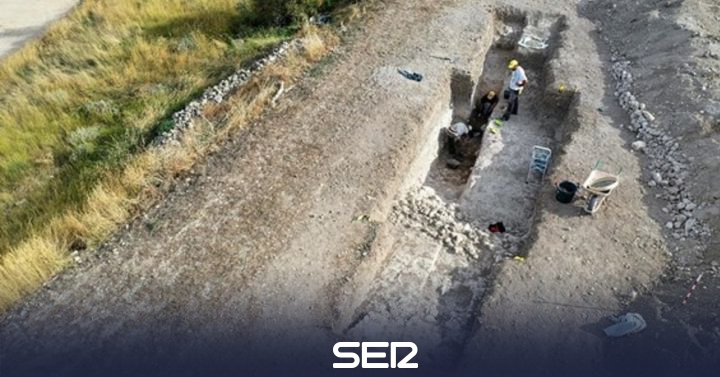A team of archaeologists led by Jesús García Sánchez, from the Institute of Archeology, Mérida-CSIC, and José Manuel Costa-García, from the University of Santiago de Compostela, seeks from this Thursday, August 19 to September 3, the existence of a roman siege to the Cerro de Castarreño. This is the fifth archaeological campaign carried out in the surroundings of what was called Segisama in Roman times, in the towns of Sasamón, Olmillos de Sasamón and Villasandino.
This intervention, financed by the Burgos Provincial Council and the three municipalities on which it focuses, will study a series of archaeological remains documented by aerial survey around the Cerro de Castarreño, in the municipality of Olmillos de Sasamón, which could be part of a Roman siege device. Through the use of different techniques, including the use of drones, archaeologists have documented a double line of moats that, for a space of more than 6 kilometers, completely surrounds the castro.
Four have also been documented camps Roman military and a second double alignment abroad. Although other scenes of siege dating from Roman times have been documented in the Iberian Peninsula, such as Numancia (Soria) or La Loma (Santibáñez de la Peña, Palencia), the closest parallel to the one being investigated in Burgos seems to be the siege of Julius Caesar around Alesia (France) in the middle of the 1st century BC. C.
Iframe code has been copied to clipboard
–
–
To confirm these hypotheses, during the archaeological campaign of 2021 they will be prospected with methods geophysicists these structures, using geophysical prospecting with geo-radar and magnetometer, which allows obtaining three-dimensional images of the subsoil without the need for excavations, to identify buried structures and plan subsequent archaeological interventions.
To date, the team members have surveyed places such as the Pinilla Trasmonte necropolis, vilica complexes in Almenara de Adaja or large sectors of the Roman city of Segisama. On this occasion, the geomagnetic prospecting will be carried out in collaboration with the Non-invasive Archeology Laboratory (MINARQLAB) of the CSIC-IAM.
Next, several polls with the aim of documenting the structures, understanding their morphology, extracting elements of relevant material culture and taking samples for radiocarbon dating and thermoluminescence of the ancient pits, so that it is possible to know precisely when these structures were formed.
Until now, only the fragmentary writings of some Greek and Latin authors were counted on to reconstruct the history of the conquest of this zone, although the new registries have allowed to determine that the Romans conquered the peninsular center at the end of the 2nd century BC. C., although the region of Burgos Odra-Pisuerga was not definitively integrated into the Roman Empire until the end of the 1st century BC. C.
This integration entailed notable changes in the landscape due to the abandonment of the old settlements of the Iron Age – such as the oppidum of Cerro Castarreño (Olmillos de Sasamón), in favor of other types of Roman nuclei. In addition, new public infrastructures appeared, such as roads or aqueducts, and the fields began to be exploited more intensively in order to obtain agricultural products with which to feed the growing population.
However, there are still many unknowns surrounding this transition process, which recently discovered structures could help answer.
–


